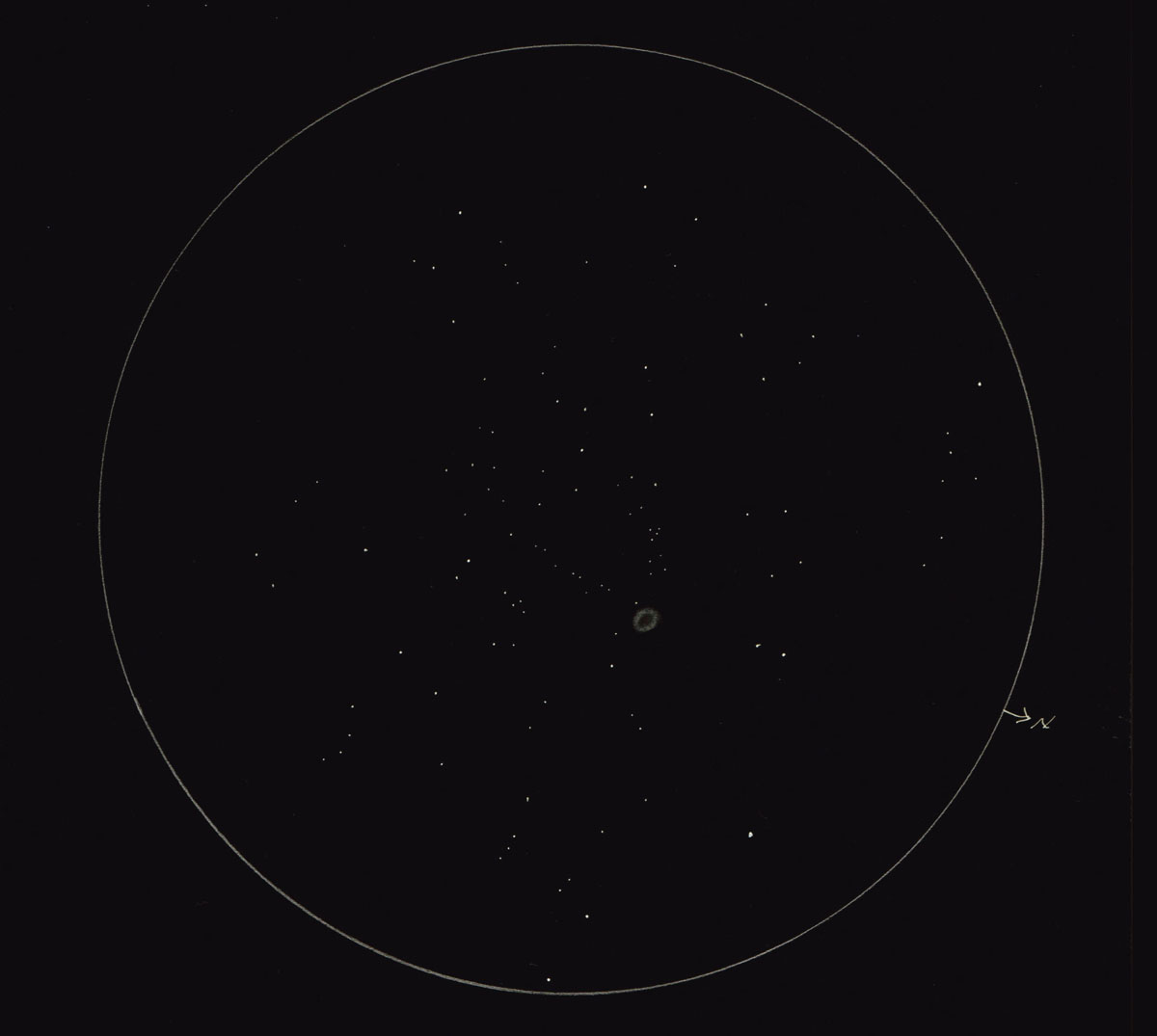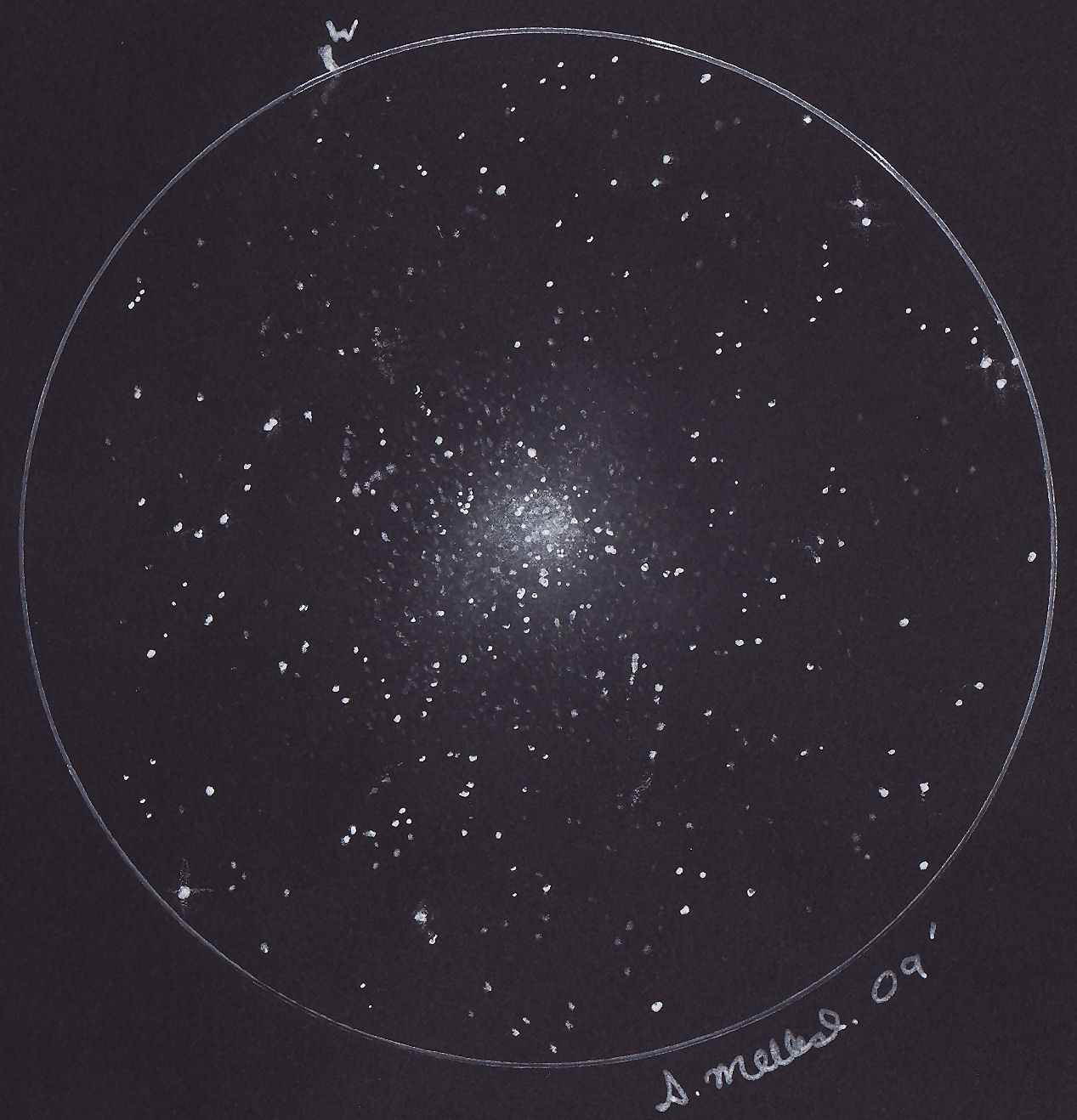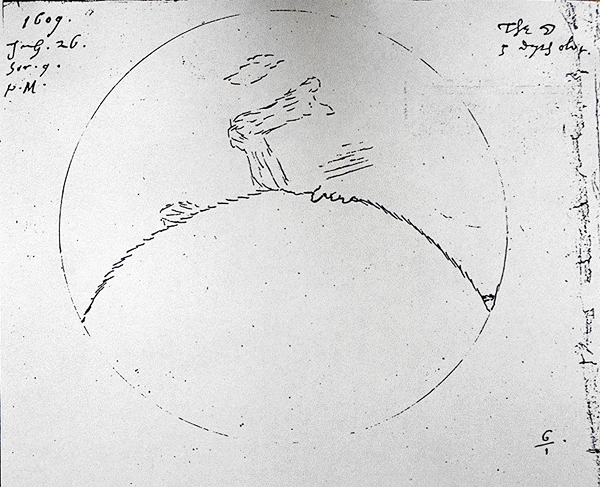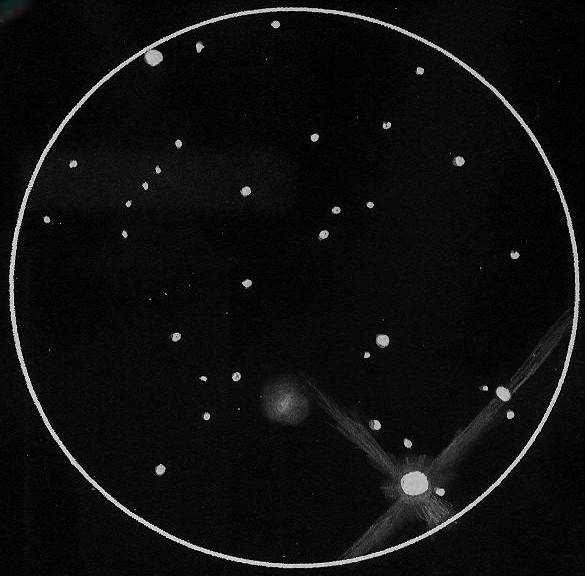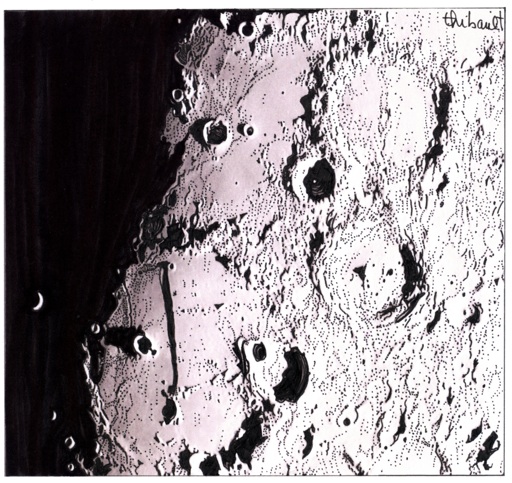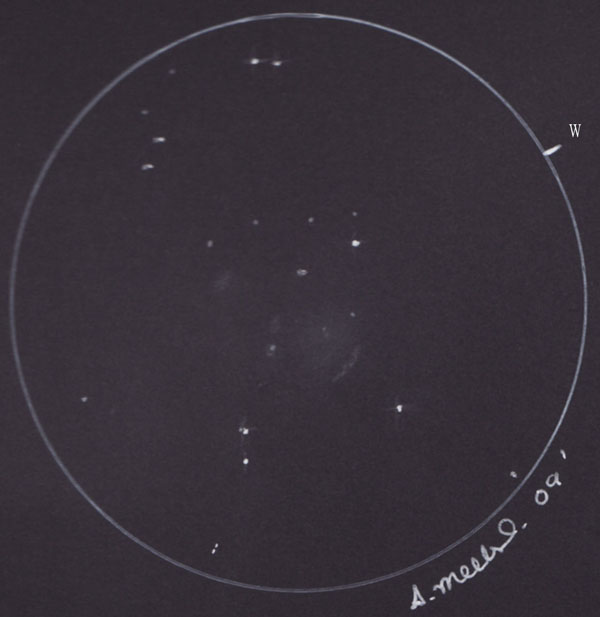
ESO 350-40
Hover mouse over image to view labels
Sketch and Details by Scott Mellish
ESO 350-40
The “Cartwheel Galaxy”
Ring Galaxy
Ilford NSW Australia
13/12/09
56cm f5 Dobsonian telescope
Field: 27′
218x magnification
Sky Quality Meter reading 21:76
Black Canford paper
White oil pencil
White pen
White pastel chalk
The enigmatic Cartwheel Galaxy is a tough enough object to observe let alone sketch.
During a nice clear night in December I made an attempt to sketch it as accurately as possible to the actual eyepiece view, and I was reasonably pleased with the end result.
The trouble with the Cartwheel is that it is quite faint and ill defined in most amateur telescopes, as averted vision is required to capture glimpses of the more subtle features of the object.
To sum up the galaxy is visible as a soft oval glow some 2.0′ x 2.0′ in size, with the two unusual companion galaxies around 1.3′ to the left as can be seen in the sketch.
Another galaxy some 2.0′ above and slightly to the left of the companions was also visible, this galaxy has no relationship with the Cartwheel.
Sculptor was getting a bit low in the west whilst I was doing this sketch, but it was possible during moments of steady seeing and using averted vision to just barely make out the ring structure, but it was very faint.
I could not detect any hint of the “spokes” as seen in the Hubble image, but with a larger scope and steadier seeing they could quite possibly be a chance.
The brighter more active star forming region of the galaxy was discernible as a slightly mottled curved patch some 1.6′ x 0.4′ in size, as can be seen slightly off center to the lower right.
I have included a duplicate reference sketch for those unfamiliar with this elusive and very rare object.
Scott Mellish


